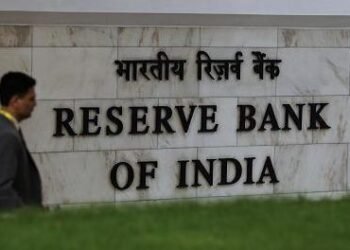Mumbai (Economy India): The Indian rupee gained momentum in early trade on Tuesday, appreciating 14 paise to 87.95 against the U.S. dollar, supported by strong domestic equities. However, rising concerns over potential U.S. tariffs on Indian exports limited further appreciation, highlighting the currency’s vulnerability to global trade developments.
Opening Strength: Key Drivers of the Rupee’s Move
Currency dealers reported that robust buying in domestic equities provided initial support to the rupee. The Sensex and Nifty opened higher, tracking positive cues from Asian markets and foreign portfolio inflows. A stronger stock market often leads to greater investor confidence and inflows, which bolster the rupee.
In the previous trading session, the rupee closed at 88.09 per dollar. Today’s opening at 87.95 marked a reversal of the slight weakness seen last week when global oil prices and dollar strength had weighed on the currency.

Global Context: Dollar Strength and U.S. Trade Tensions
Globally, the U.S. dollar has been trading firm against a basket of major currencies, with investors flocking to the greenback as a safe-haven asset amid concerns over global growth. The U.S. Dollar Index (DXY) remains elevated, making it harder for emerging market currencies like the rupee to sustain gains.
At the same time, concerns are rising about possible tariff actions by the U.S. targeting Indian goods, part of Washington’s recalibration of trade relations. Analysts caution that such measures, if implemented, could weigh on India’s export competitiveness, weaken current account balances, and add pressure on the rupee.
Historical Trend: A Volatile Year for the Rupee
The rupee has had a volatile trajectory in 2025, shaped by a mix of domestic resilience and external shocks:
- January–March 2025: The rupee strengthened briefly below 86 against the dollar, riding on strong capital inflows.
- April–June 2025: Rising crude oil prices and geopolitical uncertainties pushed the rupee back above 88.
- July–August 2025: The dollar’s global strength and risk-off sentiment in emerging markets pressured the rupee, which hovered near record lows of 88.5.
- September 2025: The current rebound to 87.95 reflects short-term positivity but does not signal a structural turnaround.
RBI’s Likely Role in Currency Management
Market watchers believe the Reserve Bank of India (RBI) is closely monitoring exchange rate movements to ensure stability. While the RBI maintains that it does not target a specific level for the rupee, it intervenes through spot and forward market operations to curb excessive volatility.
“The RBI has ample forex reserves, which provide it with firepower to intervene when necessary. But its strategy remains one of smoothing volatility rather than defending any particular rate,” said a senior currency dealer with a state-run bank.
India’s foreign exchange reserves, currently above $660 billion, give the central bank a strong buffer to counter speculative attacks on the rupee.
Trade Deficit and Oil Prices: Persistent Pressure Points
One of the structural challenges for the rupee remains India’s trade deficit, particularly due to its dependence on imported crude oil. Brent crude has been trading above $85 per barrel, raising India’s import bill and weighing on the rupee.
Higher oil prices not only widen the current account deficit but also stoke inflationary pressures, forcing the RBI into a delicate balancing act between controlling prices and supporting growth.
“Oil is the single largest external vulnerability for the rupee. Unless prices stabilize or demand eases, the rupee will face downward pressure despite temporary gains from equities or inflows,” said an economist at a Mumbai-based think tank.
Investor Sentiment and Foreign Portfolio Inflows
Foreign portfolio investors (FPIs) have turned net buyers in Indian equities in September, helping lift market sentiment. India’s strong growth outlook, supported by robust GDP numbers and resilient domestic demand, continues to attract global investors despite global headwinds.
The latest inflows into Indian stocks have provided a cushion to the rupee. However, currency experts caution that portfolio flows can be fickle, and any reversal in risk appetite could quickly drag the rupee lower.
Outlook: Will the Rupee Hold Below 88?
The near-term trajectory of the rupee will depend on several factors:
- U.S. economic data and Federal Reserve policy: A hawkish Fed stance could strengthen the dollar further, pressuring the rupee.
- Crude oil prices: Any sustained rise above $90 per barrel would worsen India’s trade deficit and weaken the rupee.
- Trade relations with the U.S.: Developments around tariffs will be closely tracked for their impact on export competitiveness.
- RBI interventions: Continued support from the central bank could prevent sharp depreciation.
Most analysts expect the rupee to trade in the 87.50–88.50 band in the coming weeks, with a bias toward weakness if global uncertainties intensify.
A Balancing Act Between Positivity and Risks
While the rupee’s opening gain to 87.95 reflects optimism from domestic equities and foreign inflows, the currency remains caught between positive domestic fundamentals and external headwinds such as global dollar strength, trade tensions, and oil prices.
For policymakers, the challenge will be to sustain investor confidence through stability, while exporters and importers must prepare for continued volatility in currency markets.
As one market strategist summed it up:
“The rupee may look stronger today, but the battle is not over. It’s a tug-of-war between India’s resilience and global uncertainties.”
(Economy India)















